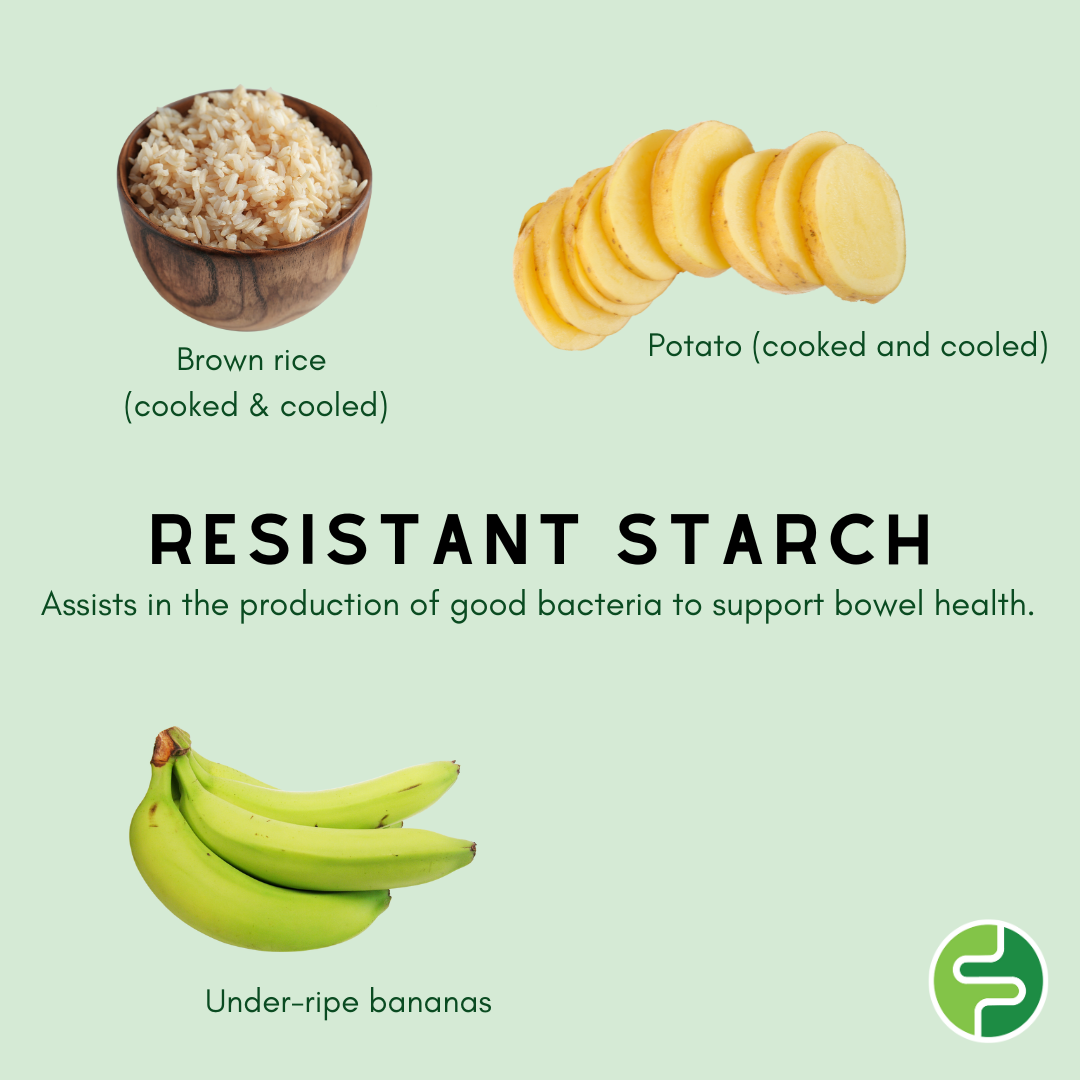Fibre, keeping you regular!
Posted on August 14, 2023

What is dietary fibre?
Dietary fibre is a great food source to keep bowel movement regular and help keep the digestive tract healthy. Fibre is most known for its ability to prevent and relieve constipation and diarrhoea, while keeping the digestive system healthy. Fibre is the indigestible parts of plant foods. It instead passes through the digestive tract undigested helping us stay fuller for longer. Dietary fibre can also reduce inflammation in the gut microbiome, alleviating inflammation associated with constipation, diverticular disease, heart disease and diabetes.
Current guidelines suggest that adult males should aim to consume 30-38g of fibre per day while females should aim for 25-30g per day and children 10-20g per day.
What foods have fibre?
Dietary fibre is categorised into three types of soluble fibre, insoluble fibre and resistant starch, each playing a different role in the workings of the digestive tract and gut microbiome.

Soluble fibre Low-FODMAP foods include:
Soluble fibre helps slow emptying processes in our stomach, helping us feel fuller for longer as this fibre dissolves in water. Soluble fibre also helps to lower cholesterol and stabilise blood glucose levels.
Low FODMAP options for soluble fibre:
– Chia seeds (max serve size: 2 tablespoons, providing 1g of soluble fibre)
– Nuts; almonds, hazelnuts (max serve size: 1.25 cups, providing 16.87g of fibre)
– Oatmeal (max serving size: ¼ cup, providing 4.1g of fibre).
– Green lentils (max serve size: 78g, providing 20g of fibre)

Insoluble fibre Low-FODMAP foods consist of:
Insoluble fibre absorbs water to help soften food contents, helping with regular bowel movements. Insoluble fibre also helps us feel fuller for longer.
Low FODMAP options for insoluble fibre:
– Skin of fruit and vegetables (dried dates- max serving size: 2, providing 3.2g of fibre,
– Kiwi fruit- max serving size: 2 small, providing 7 grams of soluble fibre)
– Whole-grain bread (max serving size: 1 slice, providing 3g of fibre)
– Dry Quinoa (max serving size: ½ cup, providing 5.18g of fibre)
– Brown rice (max serving size: 190g, providing 3.4g of fibre)
– Kale (max serving size: 301g, providing 3.6g of fibre )
– Almonds (max serve size: 1.25 cups, providing 16.87g of fibre)
– Chia seeds (max serve size: 2 tablespoons, providing 1g of soluble fibre)

Resistant starch Low-FODMAP foods are:
Resistant starch is not digested in the small intestines, however it proceeds to the large intestines where it ferments and assists in the production of good bacteria to support bowel health.
Low FODMAP options for resistant starch:
– Under-ripe bananas (still a bit green on the ends) (max serve size: 1, providing 3.2g of soluble fibre)
– Cooked and cooled potato (max serve size: ½ medium potato, providing 3g of soluble fibre)
– Cooked and cooled brown rice (max serving size: 190g, providing 3.4g of fibre)
Why cooked and cooled?
Cooked and cooled potatoes and rice have resistant starch due to a process called retrogradation. Essentially, this means that the chemical structure of the food has changes resulting in the food becoming resistent to digestion (hence the name, resistent starch) and goes to our gut where it helps our good bacteria.
Summary
Fibre is a great food source to keep bowel movements regular and help keep the digestive tract healthy.
However, consuming excessive amounts of fibre may result in bloating, gas, diarrhoea and stomach cramps.
Dietary fibre is categorised into: soluble fibre, insoluble fibre and resistant starch, each playing a different role in the workings of the digestive tract and gut microbiome. Adjusting the type of fibre you’re consuming may help with finding some symptom relief if you suffer with irregular bowel movements or other symptoms listed above.
However, we recommend consulting with a dietitian for individualised support.
To find low FODMAP serves of these foods and more, download our FREE app:
Apple Store: https://apps.apple.com/au/app/fodmap-friendly/id102019537
Google Play: https://play.google.com/store/apps/details?id=com.foodmap&hl=en







